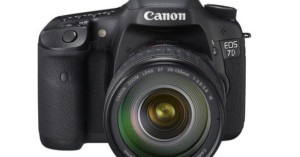
Organize and Rename Your Photos Based on EXIF Data
AmoK Exif Sorter is a program written for photographers obsessed with organization, allowing …

AmoK Exif Sorter is a program written for photographers obsessed with organization, allowing …

Yesterday, Canon announced a rather strange and unexciting Canon 7D "upgrade." It's not exactly an upgrade either -- all of the camera specs for the new Canon 7D Studio Version are unchanged. For $1829 for the body only ($130 more than the current 7D), photographers can have several "locked levels" of the camera. Pay even more and you get a barcode scanning kit and a wireless transfer unit, the WFT-E5A.
So essentially, an extra $900 on top of the regular 7D price lets you have the camera equivalent of parental controls, plus barcode scanning that embeds information into the EXIF data in photos.
Sure, there's a (somewhat niche) practical application for these features. The locked levels can allow for quick settings that can't be changed without a password -- perfect for head photographers to who send mindless drones out to shoot or have little faith in their assistants.

The most recent fuel for resentment towards BP comes from a doctored photo of the company's crisis center in Houston. America blog's John Aravosis made the connection when he examined a hi-resolution version of the photo, which was displayed prominently on the BP website. All this comes after BP promised for increased transparency between the company and the public.

Here’s a useful tool you might want to bookmark: …

If you’re not naturally an organized person, then figuring out where certain photos are on your computer or external …